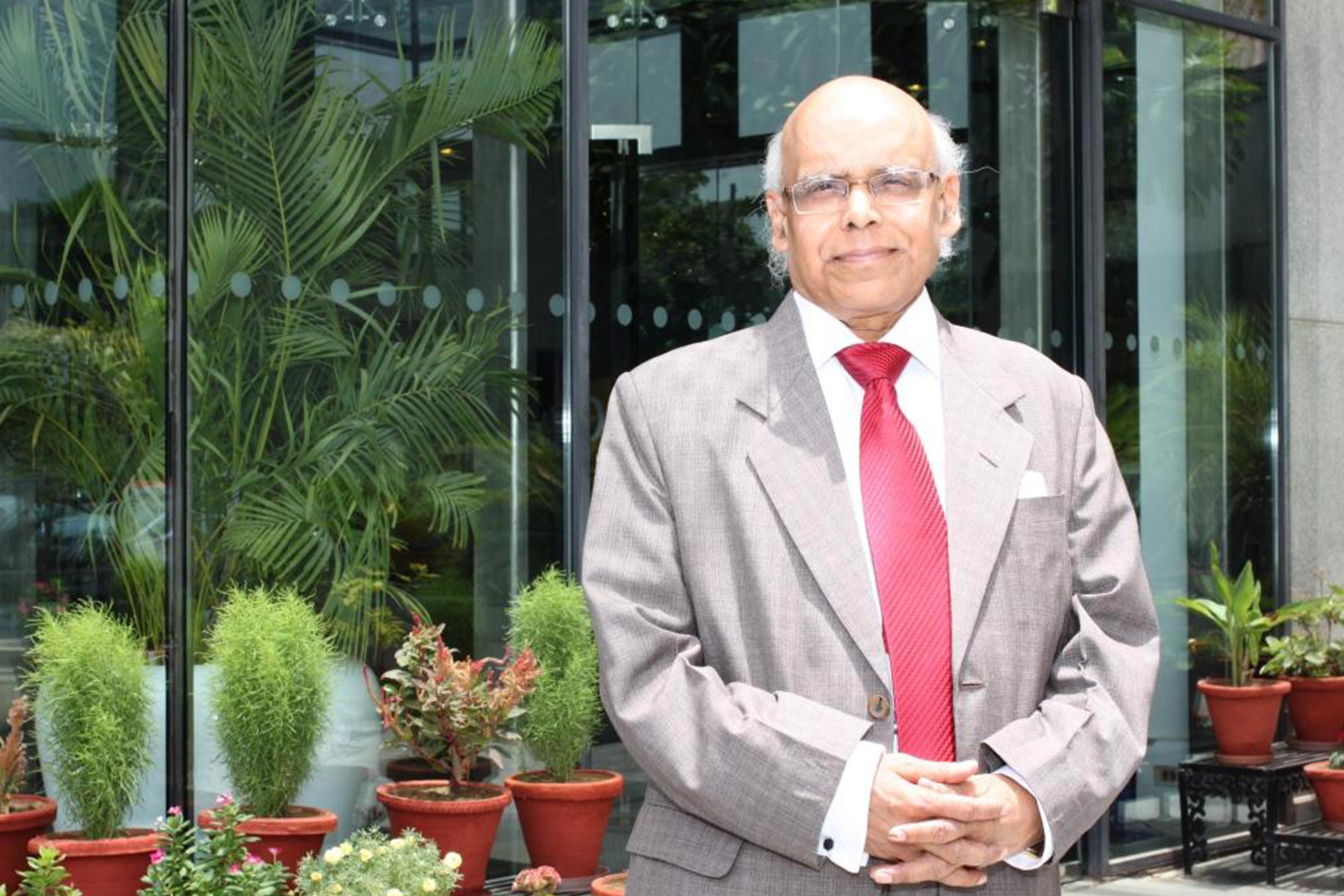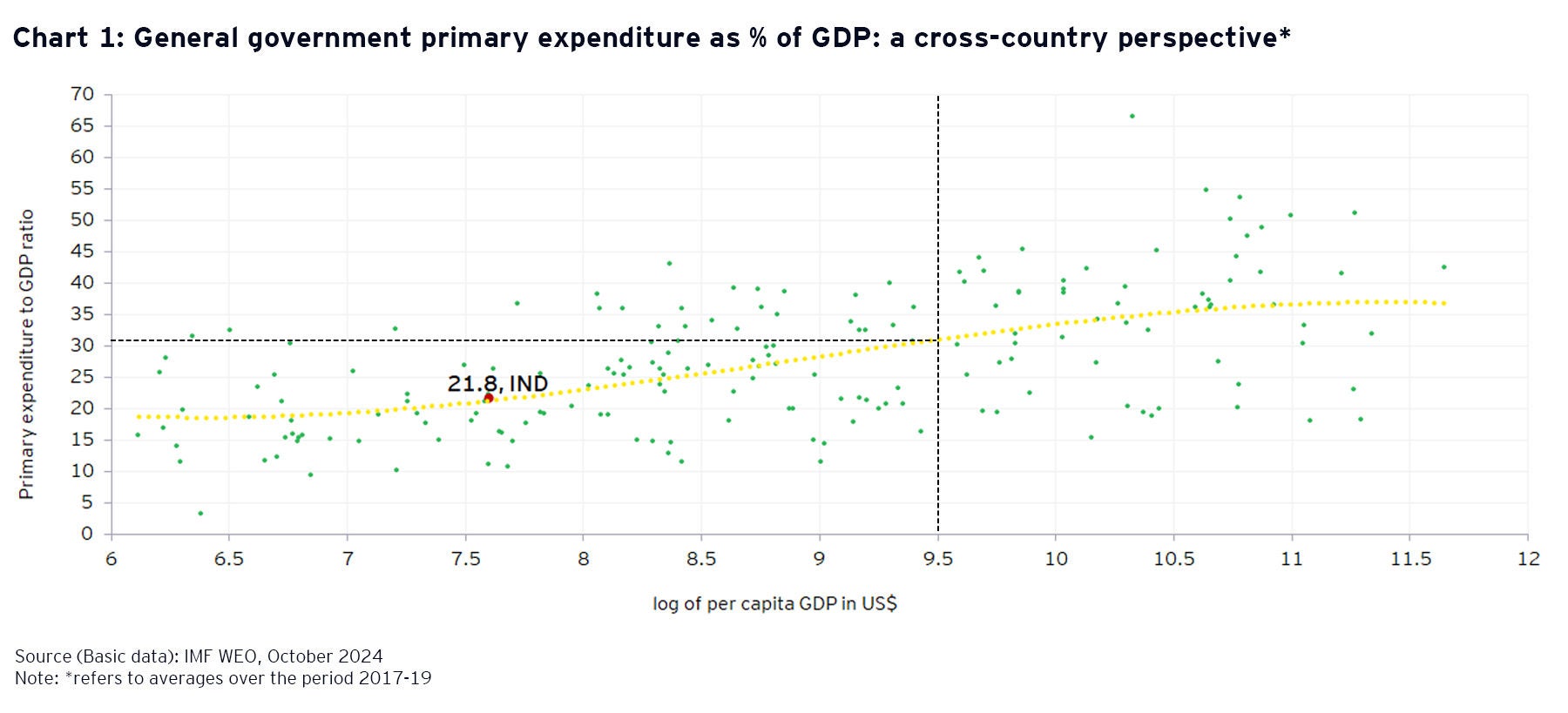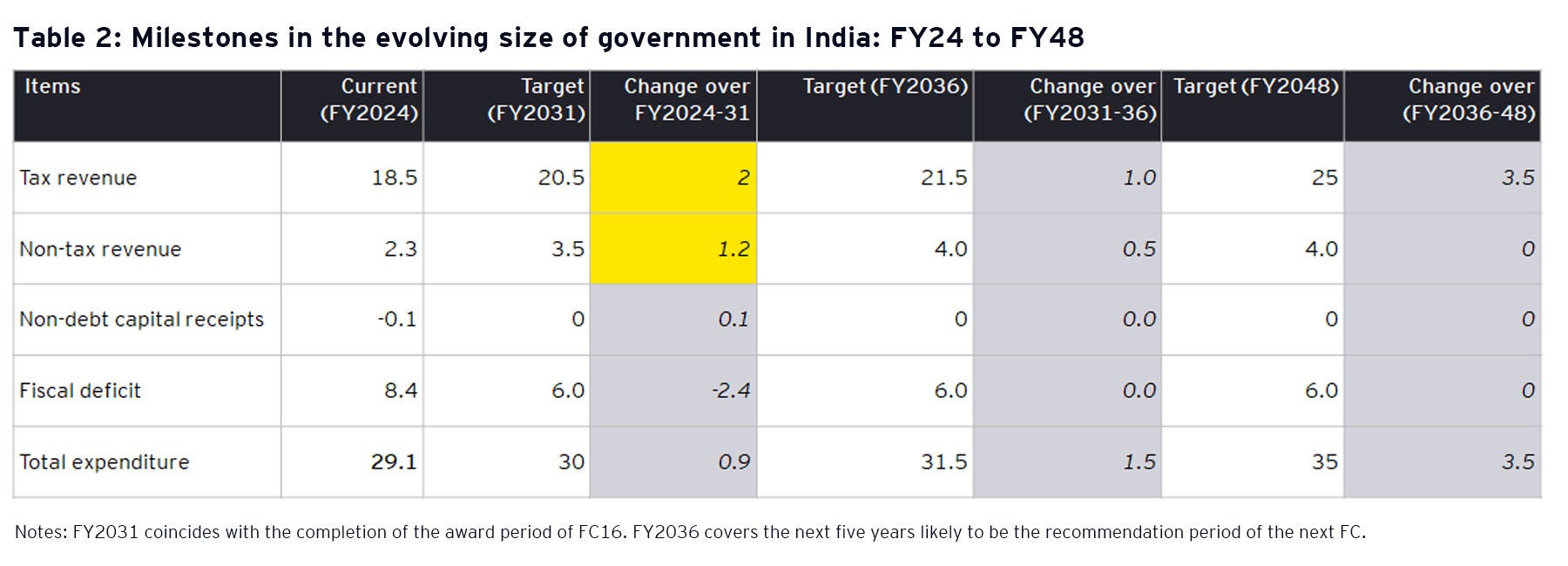Financing the augmented size of government for a developed India
The increase in the GGTE from 29.1% of GDP in FY24 to a required level of about 35%, that is an increase of about 6% points, should be primarily financed by augmenting India’s general government tax revenue to GDP ratio (GGTR), besides an increase in the contribution of non-tax revenues to GDP (GGNTR) while also reducing the fiscal deficit to GDP ratio to the FRBM norm.
India’s GGTR had languished in the range of 16% to 18% over a period of more than three decades. There are indications that India may finally be breaking out of this ceiling of 18%. Going forward, the increase in the GGTR may happen spontaneously both due to changes in the structure of the Indian economy and its increasing digitalization and formalization. It may also be driven by policy that rationalizes the direct and indirect tax structures with marginal increases in selected rates. A suitable level of tax-GDP ratio at India’s current per capita GDP as also at a developed status consistent level of per capita GDP in a cross-country framework will be examined along with its decomposition between GoI’s gross tax-GDP ratio and states’ own tax revenues to GDP ratio in a subsequent issue of EY Economy Watch. The policymakers should also take note of the recent change in terms of personal income tax revenues overtaking the corporate income tax revenues in the context of the need to increase India’s overall tax-GDP ratio.
It can be shown that a sustained nominal GDP growth of 11% and an average buoyancy of 1.125, maintained over the years, would take India’s GGTR close to 25% by FY48, amounting to an increase of 6.5% points over a period of 24 years.
India’s GGNTR has stagnated at less than 3% since FY1951 and was the lowest amongst peers in 2022 (FY23) at 2.1% as per IMF data. It is important to exploit the non-tax revenue sources better by tapping many of its government-owned untapped or under-exploited resources including land assets, assets below and above land (eg. mineral and water resources), and territorial waters.












